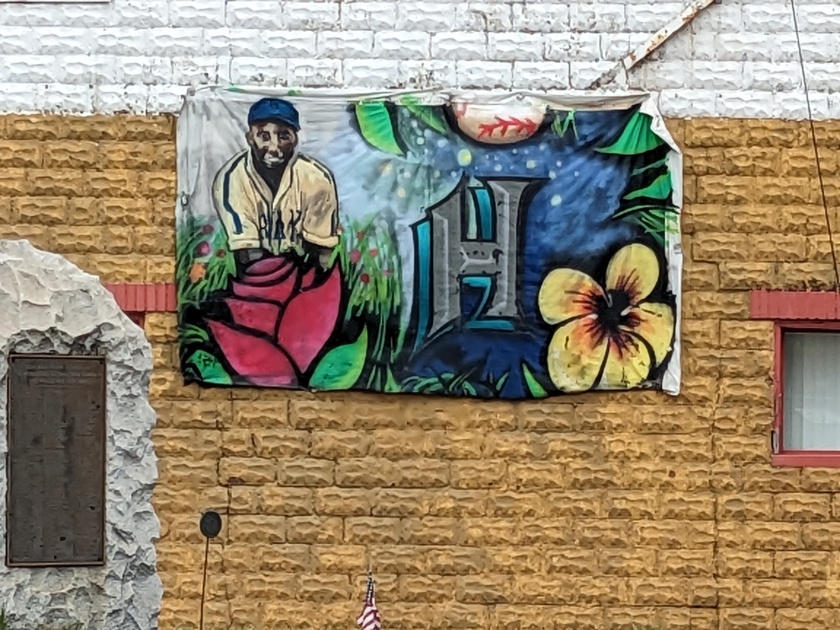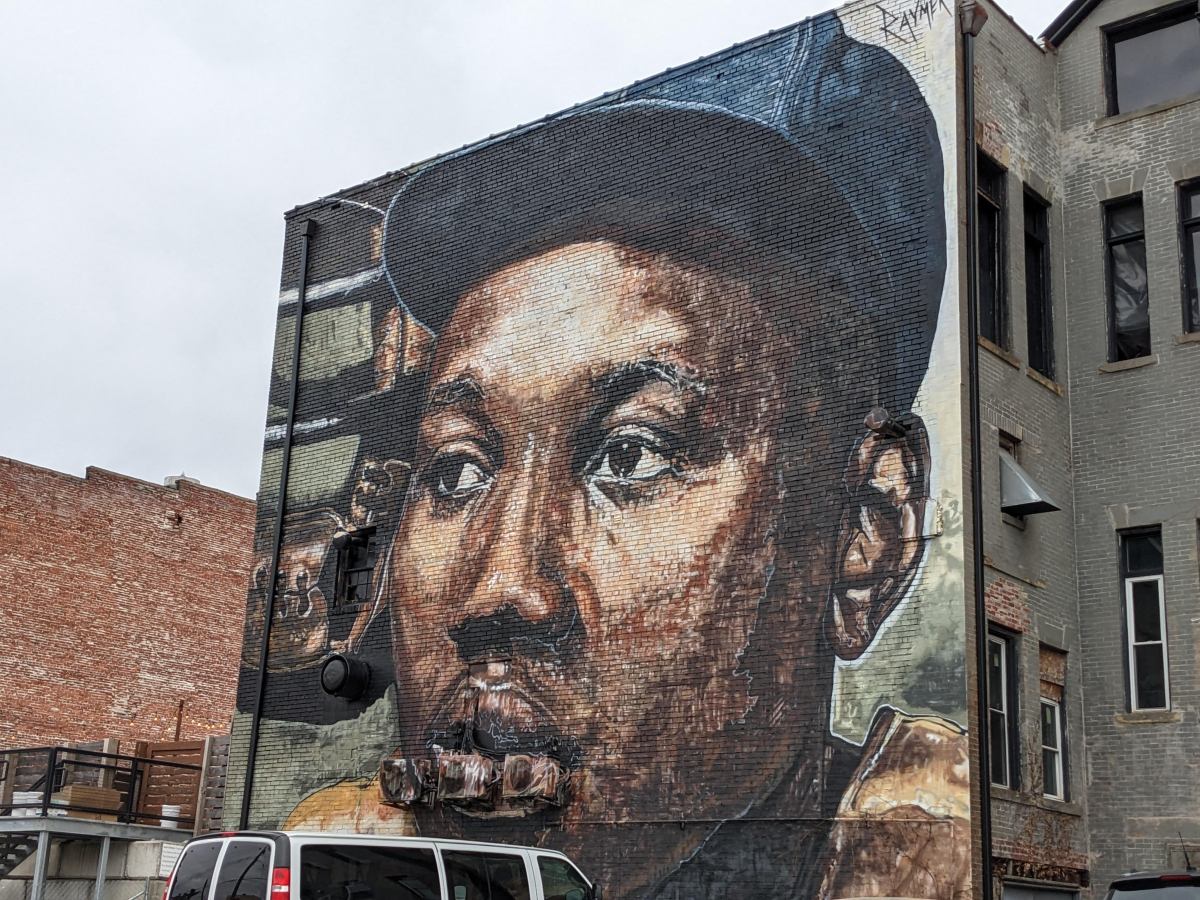Picture it: It’s the fall of 2020 and the COVID-19 pandemic has affected nearly all aspects of day-to-day life. Groceries are delivered weekly and from 8:00 to 5:00 every day, my dining room table is converted into my office. I actually enjoy working from home and I am thrilled with the number of virtual conferences, presentations, and book clubs I’m able to attend. In short, lockdown wasn’t terrible for some of us with more introverted personalities. Nevertheless, some measure of boredom set in and the need to get out of the house and do something fun safely, while keeping a proper distance from others, began to grow. Exploring Pittsburgh’s cemeteries was, obviously to me, the answer.
Pittsburgh offers no shortage of spaces in which to indulge my interests, be they historical, sports-related, or connected to my love of all things pop culture. Within the following two years, I would find Honus Wagner’s grave at Jefferson Memorial Cemetery in Pleasant Hills, where, by the way, there is an abundance of mosquitoes in the summer. You’ve been warned. Frank Gorshin, who played the Riddler in the 1960s Batman television series (I am a huge fan) is buried in Calvary Catholic Cemetery, as it turns out, right next to my pre-work-from-home office. I was thrilled when Amazon Prime filmed a bulk of the new A League of Their Own series around Pittsburgh and tracking down those locations kept me busy several weeks in a row. Before all of that, however, I knew my maiden pandemic field trip would be in search of the final resting place of Cum Posey.

Homestead Cemetery in Munhall is a 10-minute drive from my house. Traveling south from the Squirrel Hill and Greenfield neighborhoods provides the baseball tourist plenty to see in terms of Negro Leagues history in a very short area along the way. First, I crossed the Monongahela River via the formerly named High Level Bridge, built in 1936. The structure was renamed the Homestead Grays Bridge in 2002 and in warmer months, features banners of former Grays and Crawfords players on light fixtures along both sides. At the end of the bridge, there are a few markers to see and it’s worth parking nearby and walking up to them. First, there is the bridge marker itself, complete with the Homestead Grays logo. Within a few feet is a Pennsylvania state historical marker providing a brief history of the team. Across the street, a painted banner hangs from the side of the building depicting Josh Gibson’s likeness and again, the Homestead Grays’ logo.


A block to the east, located in Hazel Way (an alley between 8th and 9th Avenues), lies the new Josh Gibson mural created by artist Jeremy Raymer and unveiled in 2021. The 2,000 square foot painting covers the entire back of a building, currently occupied by the Voodoo Brewing Company. The project was approved by Pittsburgh’s Josh Gibson Foundation, an organization that provides academic and athletic opportunities for young people. The art is outstanding and just one of many of Raymer’s murals found throughout Pittsburgh, which include personal favorites of horror icon Tom Savini in Lawrenceville and Roberto Clemente on the city’s north side. As a bonus, it’s now possible to catch a glimpse of the mural while traveling south on the Homestead Grays bridge. All of these Homestead and Munhall locations are technically within walking distance of one another, but keep in mind Pittsburgh’s extremely hilly landscape.

Further up the hill toward the cemetery lies another piece of Homestead Grays history. Just behind the Munhall municipal buildings and police station sits West Field, long ago a playing field and practice area for the Homestead Grays. Built in the late 1930s, the Grays used this facility, among others, for exhibition games, spring training, and official games when Forbes Field was otherwise unavailable.

Though completely renovated several years ago, the field is still worth stopping for on the way through Munhall. The playing field is completely turf now with the capability of hosting baseball, softball, football, and soccer games. Currently home to the Chatham University baseball and softball programs as well as the Steel Valley High School baseball team, the baseball field’s grandstand occupies the same space as the original West Field stadium. While the field offers little for the baseball history fan, it remains an interesting location to take in, knowing who played here decades ago.
Another three blocks up the hill, and finally, Homestead Cemetery sits opposite St. John Cemetery across Munhall’s Main Street. Weather permitting, the cemetery is open daily from sunrise to sunset. Upon entering the cemetery, the Posey family plot is located in Section D, which is situated between the two driveways on the left-hand side. Cumberland (“Cum”) Willis Posey Jr. was born in 1890 and is regarded as one of the finest all-around athletes of his time, certainly in western Pennsylvania.

A standout in baseball and basketball, Posey began playing with the Homestead Grays in 1911, was managing the team five years later, and by the 1920s became an owner for the next 25 seasons. Buried next to him is Ethel T. Posey, his wife of over 30 years. Thanks to the SABR Women in Baseball Committee, I knew that Ethel inherited ownership of the team after his death in 1946, making her a significant figure in Homestead Grays and baseball history. As with Josh Gibson’s grave across town in Allegheny Cemetery, there are sure to be items left in tribute by visitors—usually baseballs, trading cards, or photos. Cum Posey was elected to the National Baseball Hall of Fame in 2006 and the Naismith Memorial Basketball Hall of Fame a decade later.
Pittsburgh is a fun city that is full of monuments, exhibits, and memorials to its rich sports history and traditions. The SABR Landmarks Map is an excellent resource for finding these locations and more Negro League memorials across the country. For a huge dose of history packed into a small geographic location, look no further than Homestead and Munhall, Pennsylvania.


